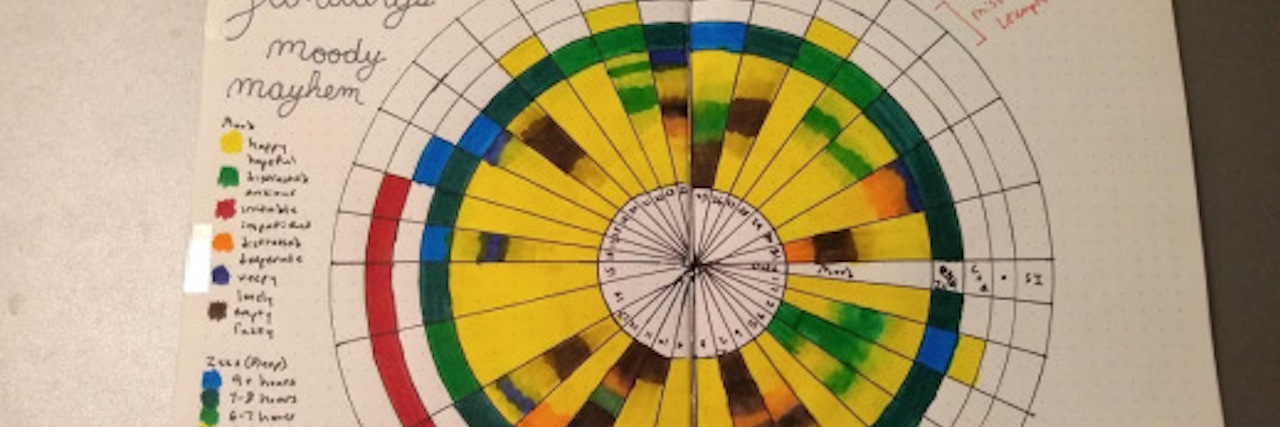We all learn about object permanence in freshman psychology, but just in case you’ve forgotten, babies develop object permanence when an object can disappear from their line of sight and they still know it exists, just somewhere else. I’m 24, so I’ve developed object permanence when it comes to literal objects, but when it comes to my emotions, I’m just as scared and confused as a newborn.
What I mean is, when I’m happy, I’m happy. Intellectually I understand that I have felt other things in the past, like anger or sadness or emptiness, but all of those things feel distant and I have trouble understanding why I would have felt that way. Again, I can intellectually pinpoint the reason (mental illness, growing pains, my period, etc.) but I don’t really understand. It feels like I was probably exaggerating my other emotions at the time, or like I just wasn’t trying hard enough, since being happy in this moment feels so easy and natural, like it’s all I’ve ever done.
Unfortunately, the same thing happens with any other emotion. Angry? I’ve always been angry and I’ve just been sitting on it, being a good little girl and I have to keep shoving down my rage because I’ve done it for so long. If I let it out now it’ll be totally out of character and people will hate me, so I’m going to be stuck with all this anger forever. Sad? I’ve always been sad, every moment of happiness was just distraction, or a fluke, and it will never ever last because here I am, sad again, and it always comes back to this.
Whatever emotion I’m feeling completely consumes my present, but it also traces my steps to color the past, and it reaches forward to shape my view of the future. I have absolutely no emotional object permanence.
Like I said, intellectually I can appreciate that I have felt other emotions and will probably feel other emotions again. But those thoughts are saplings in the face of my tornadoes of emotion. Those intellectual thoughts do not stand a chance against the raw power of how I feel, and even if I do manage to keep track of them in the storm, they end up so battered that they feel kind of pointless.
Basically, my emotions, sense of identity and perception of reality are all tied up in a Gordian Knot. This makes life… challenging, to say the least. And weirdly enough, it’s the happiness that throws me off the most. When I’m happy, it feels like all the sadness and depression I’ve experienced was just an exaggeration, like it wasn’t even real and I was just feeling sorry for myself. Happiness often brings on huge waves of shame that eventually pull me back down again.
But this isn’t a post just to complain about the weird things my brain does. I also want to help. Several mental health professionals have told me that this is a common problem for all kinds of people, neurotypical and neurodivergent alike. I still struggle with this a lot, like a lot a lot, so don’t take my advice as gospel, but I’ve found that tracking my mood can help.
If you’ve ever gone to a psychologist, psychiatrist, counselor, etc., for mood problems, you have almost definitely received a chart that looks like this:
![]()
This is a standard mood tracker, and I have never met a single person who has found it useful, myself included. For a long time, I thought that meant tracking my mood in general was pointless. But I was so wrong! I’ve been tracking my mood since July 2018, and I’ve stuck with it because I finally found a system that works for me. I have a post in progress about how to make a mood tracker that works for you, but here’s a picture of January, so you can get a general idea.
![]()
If you can’t read my handwriting, don’t worry about it. You’re in good company alongside my husband, my parents and every teacher I’ve ever had. I’ll explain what all the categories are and how it all works in that upcoming post. I just wanted to add a picture so you could see how different my mood tracker is from the cold, clinical one they give you at the doctor’s. Now when I’m sad, I can look back at seven months’ worth of mood wheels and say, no, look at all that yellow. There’s no way all of that was just a distraction or a fluke. When I’m mad, I can point out that I only had one day in January where I was in an incredibly irritable or angry mood, and while it’s possible I’m constantly repressing my rage, it’s more likely that my anger will genuinely dissipate and I’ll be OK soon.
I think the only way to develop emotional object permanence is to change the patterns that I’ve developed around my emotions. Clearly whatever I’ve been doing so far hasn’t led to a totally realistic view of my emotions or myself, so something needs to change. If I want those intellectual thought saplings to grow, I gotta start watering them.
Follow this journey on Megan Writes Everything.

